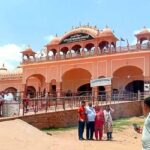Hanumangarh Travel Guide, a city in Rajasthan, is rich in history and culture, offering an intriguing mix of ancient and modern attractions. One of the key highlights is the Bhatner Fort, an ancient fort dating back to over a thousand years, which stands as a testament to the region’s historical importance. The Kalibangan Archaeological Museum showcases relics from the Indus Valley Civilization, offering a glimpse into the past of one of the world’s oldest civilizations.
Religious tourists often visit the Gogamedi Temple, dedicated to the folk deity Gogaji, which attracts pilgrims from across the region. The Brahmani Mata Temple and Sila Mata Temple are also notable spiritual sites. For nature lovers, the Pallu Wildlife Sanctuary offers a chance to explore the local flora and fauna.
Hanumangarh’s serene ambiance, historical landmarks, and religious significance make it a fascinating destination for those looking to explore Rajasthan’s lesser-known gems. It’s perfect for history buffs and spiritual seekers alike.
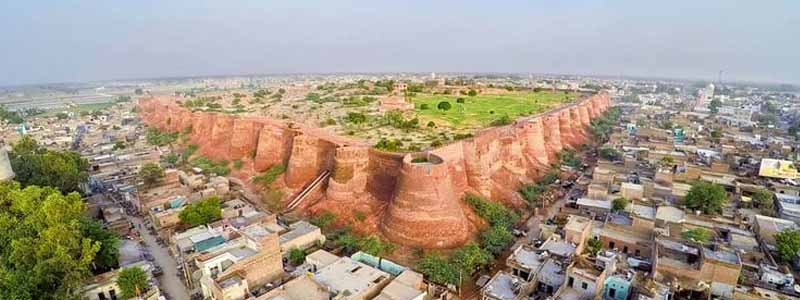
Places to Visit in Hanumangarh
Hanumangarh offers several attractions that blend history, spirituality, and nature. Here are some must-visit places:
Bhatner Fort – A 1,700-year-old fort, it is one of the oldest forts in India, offering insights into the city’s ancient past.
Kalibangan Archaeological Museum – This museum showcases artifacts from the Indus Valley Civilization, including pottery, tools, and seals.
Gogamedi Temple – A popular pilgrimage site dedicated to Gogaji, a folk deity worshipped in northern India.
Brahmani Mata Temple – An important religious site with an ancient stone idol, known for its spiritual significance.
Sila Mata Temple – Another revered temple known for its religious importance among the locals.
Pallu Wildlife Sanctuary – A sanctuary rich in local flora and fauna, ideal for nature enthusiasts.
Temple of Shri Sukha Singh Mehtab Singh – Dedicated to the two warriors who fought against the Mughals, this temple holds historical value.
These sites make Hanumangarh a unique destination for history lovers, religious pilgrims, and nature explorers alike.
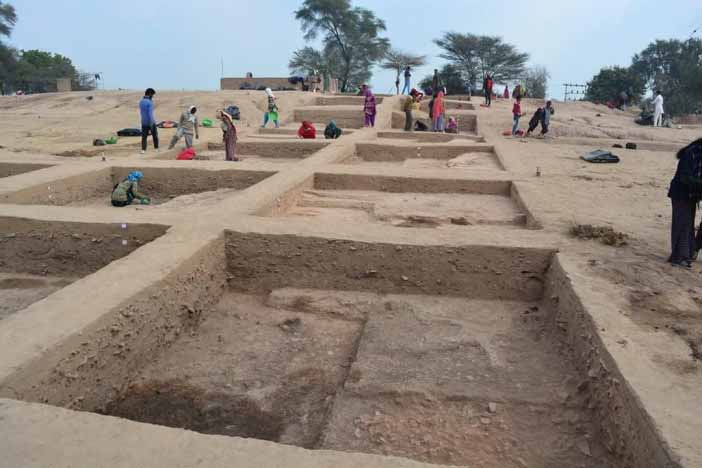
Things to Do Hanumangarh
When visiting Hanumangarh, there are plenty of activities to enjoy that cater to various interests. Here are some top things to do:
Visit Kalibangan Archaeological Museum: Spend time exploring the exhibits that showcase artifacts from the Indus Valley Civilization, enhancing your understanding of ancient Indian history.
Pilgrimage at Gogamedi Temple: Participate in religious rituals or simply experience the spiritual ambiance at this important pilgrimage site.
Worship at Brahmani Mata Temple: Engage in prayer and meditation at this revered temple, enjoying its peaceful surroundings.
Wildlife Watching in Pallu Wildlife Sanctuary: Take a guided tour to spot local wildlife and enjoy the natural beauty of the sanctuary.
Cultural Exploration: Attend local festivals and fairs to experience the rich cultural heritage of Hanumangarh, including traditional music and dance.
Local Cuisine Tasting: Try local Rajasthani dishes at local eateries, indulging in flavors unique to the region.
Photography: Capture the stunning landscapes, historical sites, and vibrant local life, making for great memories and social media posts.
These activities provide a well-rounded experience of Hanumangarh’s history, culture, and natural beauty.
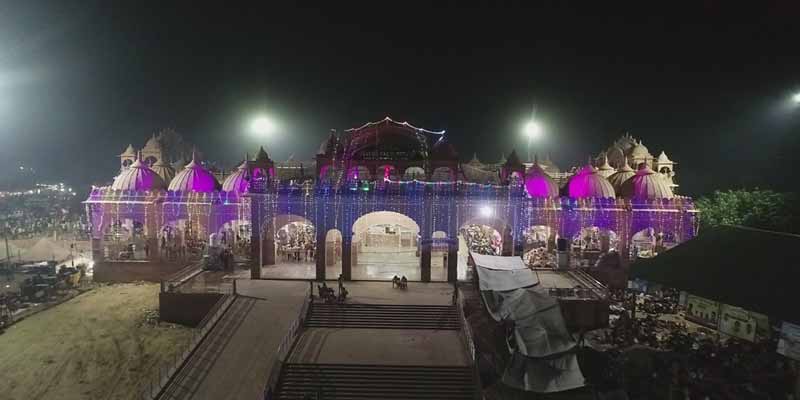
Festivals and Events
Hanumangarh hosts several vibrant festivals and events throughout the year, reflecting its rich cultural heritage and local traditions. Here are some notable ones:
Gangaur Festival – Celebrated in March-April, this festival is dedicated to the goddess Gauri. Women dress in traditional attire, perform rituals, and carry beautifully decorated idols to local water bodies.
Makar Sankranti – This harvest festival, celebrated in January, involves kite flying and feasting. The vibrant skies filled with kites and the festive atmosphere make it a joyous occasion.
Teej Festival – Celebrated in August, Teej marks the onset of the monsoon. Women participate in various rituals, songs, and dances to honor the goddess Parvati and pray for the well-being of their husbands.
Navratri – This nine-night festival dedicated to the goddess Durga involves fasting, prayers, and vibrant Garba dances, culminating in Dussehra, which signifies the victory of good over evil.
Holi – The festival of colors is celebrated with enthusiasm in Hanumangarh. People gather to play with colors, dance, and enjoy festive foods.
Diwali – The festival of lights is marked by lighting diyas, bursting crackers, and feasting. Homes are decorated, and the atmosphere is filled with joy and positivity.
These festivals showcase the vibrant culture of Hanumangarh, making it an exciting place to experience traditional celebrations.
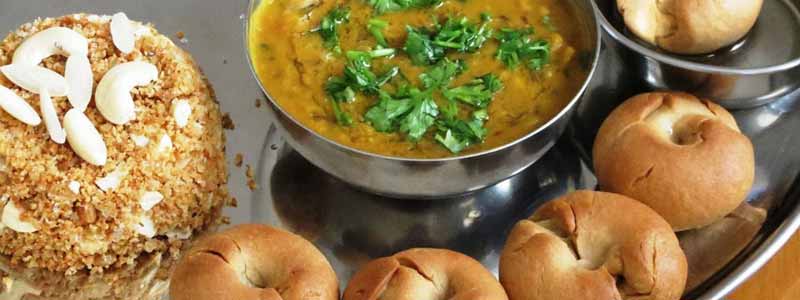
Food in Hanumangarh Travel Guide
Hanumangarh offers a delightful array of traditional Rajasthani cuisine, reflecting the region’s rich culinary heritage. Here are some must-try foods in Hanumangarh Travel Guide:
Dal Baati Churma: A quintessential Rajasthani dish, it consists of round wheat balls (baati) served with lentil curry (dal) and a sweet crumbly mixture (churma) made from crushed baati, ghee, and jaggery.
Gatte ki Sabzi: This dish features gram flour dumplings (gatte) cooked in a spicy yogurt gravy, providing a unique flavor.
Ker Sangri: A traditional Rajasthani dish made with dried ker berries and sangri beans, often cooked with spices and served with bajra (pearl millet) roti.
Bajra Roti: Flatbreads made from pearl millet flour, often served with ghee and jaggery or paired with curries.
Pyaaz Kachori: A popular snack, these are deep-fried pastries stuffed with spiced onion filling, served with tangy tamarind or mint chutney.
Mirchi Vada: This street food consists of green chili peppers stuffed with spicy potato filling, coated in gram flour batter, and deep-fried.
Rajasthani Sweets: Don’t miss out on local sweets like Gulab Jamun, Ras Malai, and Besan Ladoo, which are popular among locals and visitors alike.
Lassi: A traditional yogurt-based drink, lassi in Hanumangarh is often served sweet or salted, providing a refreshing complement to spicy meals.
Exploring these dishes will give you a true taste of Hanumangarh’s culinary traditions!
How to Reach Hanumangarh
Reaching Hanumangarh is convenient due to its well-connected transportation network. Here are the main ways to get there:
By Air: The nearest airport is in Bikaner, approximately 120 kilometers away. From the airport, you can hire a taxi or take a bus to Hanumangarh Travel Guide.
By Train: Hanumangarh Junction is well-connected to major cities in Rajasthan and neighboring states. Regular trains from Delhi, Jaipur, and Bikaner make it an accessible option for travelers.
By Road: Hanumangarh is easily reachable by road. It is well-connected by National Highways, making it accessible from nearby cities like Bikaner, Jaipur, and Delhi. You can drive or take a bus, with several private and state-run bus services operating in the region.
These options make Hanumangarh a convenient destination for exploring the rich culture and history of Rajasthan.

